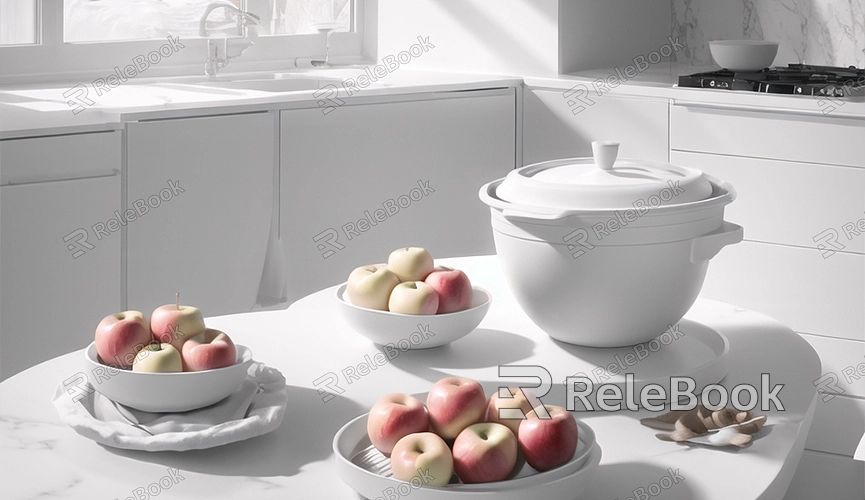How to Create 3D Print Models
3D printing technology is rapidly becoming mainstream, revolutionizing our approach to design and manufacturing across industries from industrial production to personal creative projects. Creating 3D print models involves a series of steps from initial concept to final print. This article will guide you through the process of creating 3D print models, covering everything from choosing design software to optimizing models, and providing practical tips to help you effortlessly realize your 3D printing projects.
Choosing the Right Design Software
The first step in creating 3D print models is selecting suitable design software. There are many 3D modeling software options available, including Tinkercad, Blender, Fusion 360, and SketchUp. Each software has unique features and applications suited to different needs and skill levels.

Tinkercad is beginner-friendly with a simple and intuitive interface, ideal for quickly creating basic models. Blender offers powerful tools for complex model creation and editing, and it's open-source and free. Fusion 360 is a professional-grade software suitable for high-precision and intricate designs. SketchUp is known for its ease of use, particularly popular in architecture and interior design.
Building the Base Model
Once you've chosen your design software, you can begin constructing the base model. Start by defining the size and shape of your 3D print model. Use basic geometric shapes like cubes, spheres, and cylinders as building blocks, and manipulate them through operations like extrusion, rotation, and scaling to create preliminary shapes.
Throughout the design process, ensure careful attention to the model's dimensions and proportions to meet 3D printing requirements. For example, avoid overly thin walls that can lead to print failures, and ensure that intricate details are sufficiently large for accurate reproduction by the printer.
Model Optimization
After creating the basic model, optimization is crucial. This involves checking and fixing issues within the model to ensure smooth printing. Common issues include overlapping faces, non-manifold edges, and excessively thin walls.
Use built-in inspection tools in design software such as Blender and Fusion 360 to automatically detect and repair these issues. Additionally, specialized 3D printing model repair tools like Meshmixer and Netfabb can further optimize and prepare models for printing.
Adding Support Structures
Depending on the complexity of your model, you may need to add support structures. Support structures are necessary to support overhanging parts during printing and prevent print failures. Many 3D printing software programs have automated support generation features, allowing you to adjust the placement and quantity of supports as needed.
When adding support structures, aim to minimize their number and contact points to facilitate easy removal after printing while ensuring the model's print quality.
Exporting Model Files
Once your model design and optimization are complete, export the model in a file format recognized by 3D printers. Common 3D printing file formats include STL, OBJ, and 3MF. STL is the most widely used format supported by nearly all 3D printers.
When exporting files, ensure correct unit and size settings for the model and choose an appropriate resolution. Higher resolutions capture finer details but result in larger files and longer print times.
Preparing for Printing
After exporting the model file, you can begin preparing for printing. Import the file into 3D printing software like Cura, PrusaSlicer, or Simplify3D for slicing. Slicing divides the 3D model into layers and generates printing paths for the 3D printer.
In slicing software, adjust printing parameters such as layer height, infill density, print speed, and temperature. These parameters influence the final print quality and printing time. Generally, lower layer heights result in finer models but longer print times, while higher infill densities provide sturdier prints but consume more material.
Starting the Print
Once printing parameters are set, initiate printing. Transfer the sliced G-code file to your 3D printer, load printing material (such as PLA, ABS, or PETG), and start the print. During printing, monitor the printer's progress to ensure there are no print failures or other issues.
After printing completes, carefully remove the printed model and detach support structures if necessary. Optionally, perform post-processing steps like sanding, painting, or other finishing techniques to enhance the model's appearance and quality.
If you require high-quality 3D textures, HDRI, or 3D model downloads for your modeling and virtual scene needs, consider downloading them from Relebook.
Creating 3D print models is a complex yet creative process. From selecting the right design software to building, optimizing, preparing, and actually printing the model, each step requires careful consideration and execution. Through continuous practice and learning, you can master this skill and create a variety of interesting and practical 3D printing projects.

